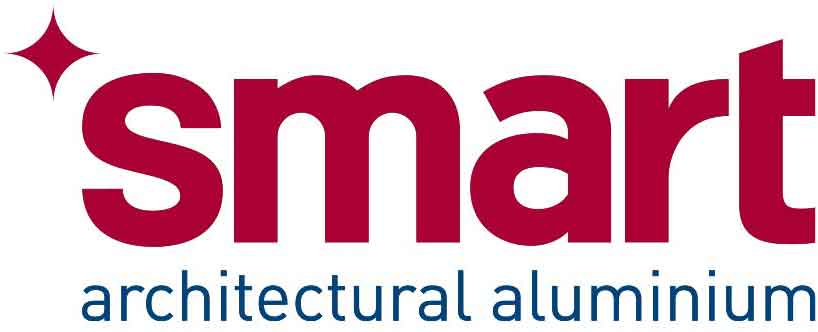What Are the Different Types of Conservatories?
If you’re planning to add a conservatory to your home, it’s important to choose the right layout from the start. The shape, roofline, and footprint all affect how the space feels and functions—whether you’re creating a place to relax, work, or entertain. The most popular types of conservatory offer a mix of traditional and modern designs, each suited to different property styles and uses.
There are eight core types of conservatory, and most other configurations are variations or combinations of these. Understanding the differences can help you choose the right structure for your home, budget, and lifestyle:
- Lean-to Conservatory – Ideal for compact homes and bungalows with low rooflines
- Victorian Conservatory – Traditional bay-fronted design with ornate detailing
- Edwardian Conservatory – A practical square or rectangular layout that maximises space
- Gable-end Conservatory – High-pitched roof and striking frontage for a grand appearance
- P-Shaped Conservatory – Combines two layouts to create zoned areas for multi-purpose use
- T-Shaped Conservatory – Central feature design ideal for larger detached properties
- L-Shaped Conservatory – Wraps around the corner of your home to make use of dual elevations
- Glass-to-Floor Conservatory – Full-height glazing for uninterrupted garden views and more natural light
Lean-To Conservatory
Also known as a sunroom, the lean-to conservatory features a sloping roof that leans away from the house. It’s a practical option for homes with low rooflines and limited space. Affordable, modern, and easy to configure, it’s especially suitable for bungalows and contemporary properties.
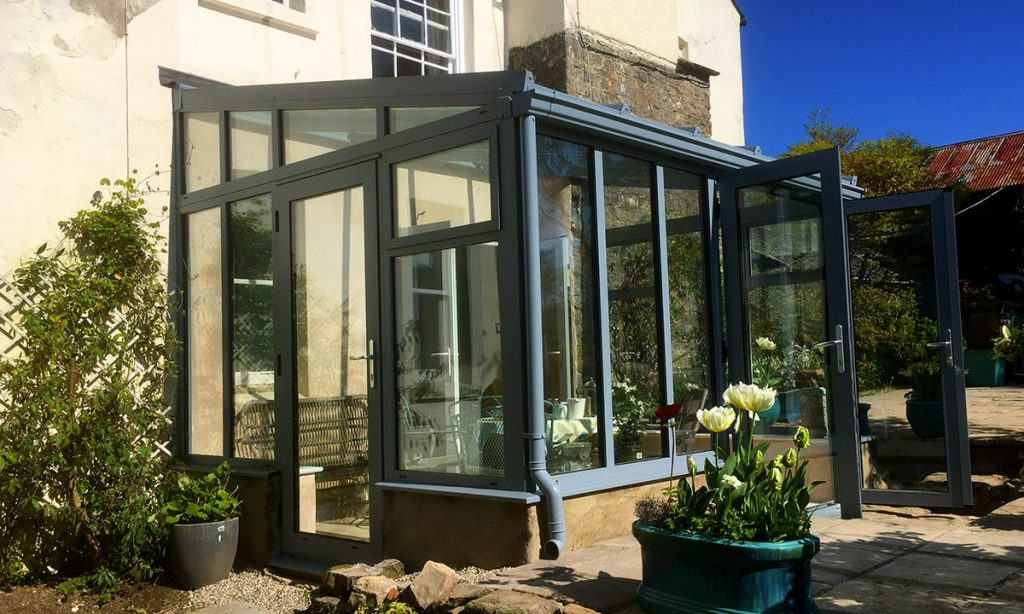
Victorian Conservatory
One of the most recognised styles, the Victorian conservatory includes a faceted front and steeply pitched roof with decorative ridge details. It’s ideal for period properties and creates a curved bay that maximises outdoor views. Not recommended for homes with height restrictions.
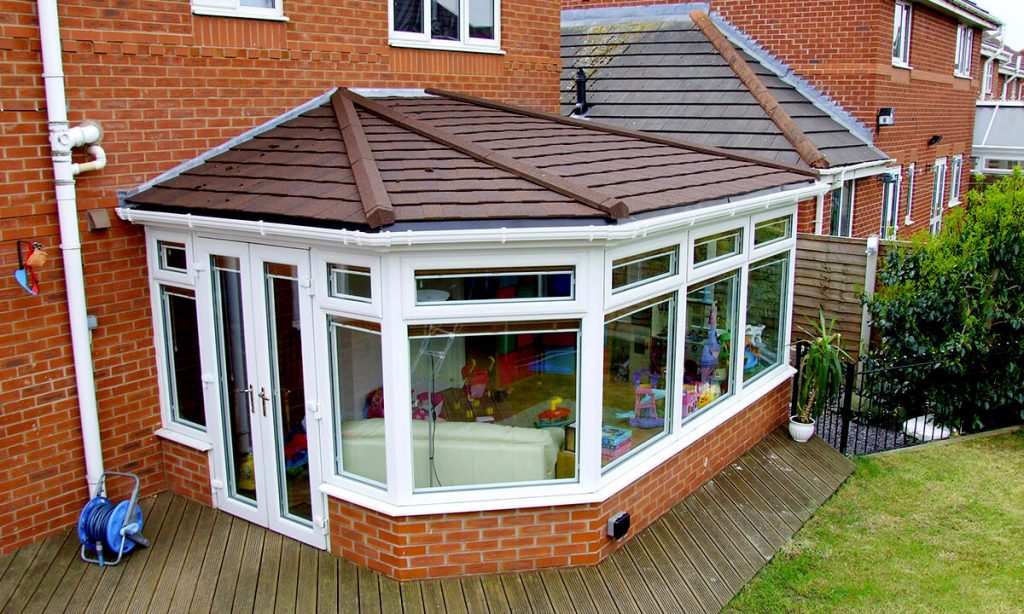
Edwardian Conservatory
The Edwardian style offers a square or rectangular layout and a high, ridged roof. This design maximises floor space and suits a range of traditional homes. For low rooflines, the hip-back Edwardian provides a more compact option without compromising on ceiling height.
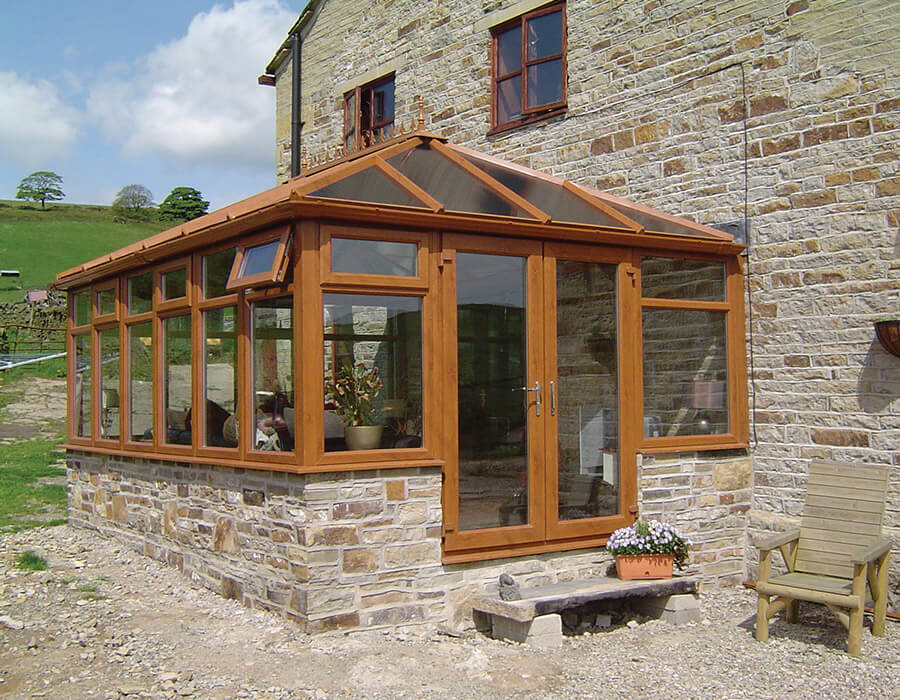
Gable-End Conservatory
Based on the Edwardian structure, the gable-end conservatory includes a vertical front gable that creates a striking silhouette. This full-height apex increases internal space and brings in more natural light. A hip-back variant is available for bungalows or homes with restricted roof height.
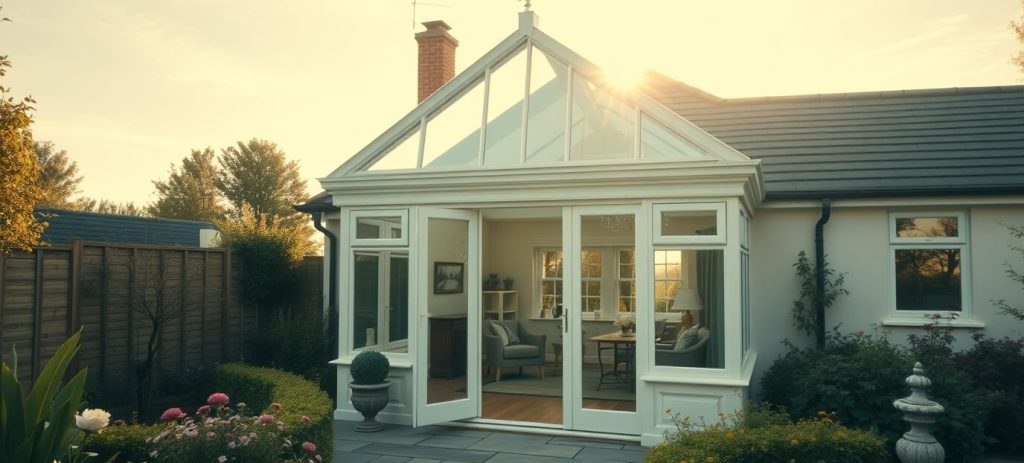
P-Shaped Conservatory
This layout combines a lean-to and a Victorian or Edwardian style, forming a P-shaped footprint. It offers separate zones, which is useful for open-plan living. Best suited to larger homes with ample external wall space.

T-Shaped Conservatory
T-shaped designs feature a central projection with two side wings. They provide a grand entrance and are often used to create zoned areas for dining and relaxing. Suitable for detached properties with generous garden space.
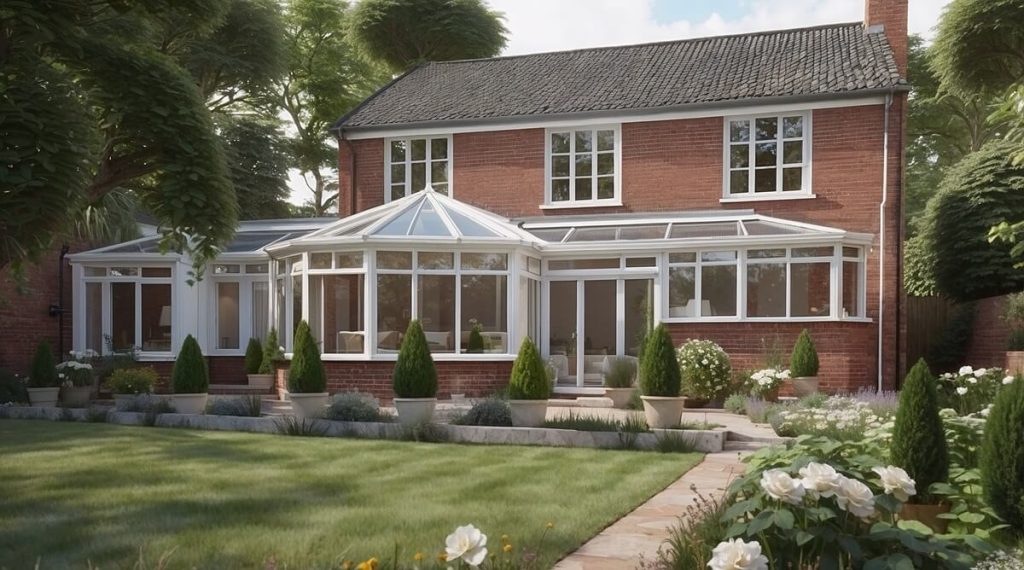
L-Shaped Conservatory
Designed to wrap around two elevations of a building, the L-shaped conservatory maximises available space and works well on corner plots. It’s ideal for creating multifunctional areas or linking two parts of a property.
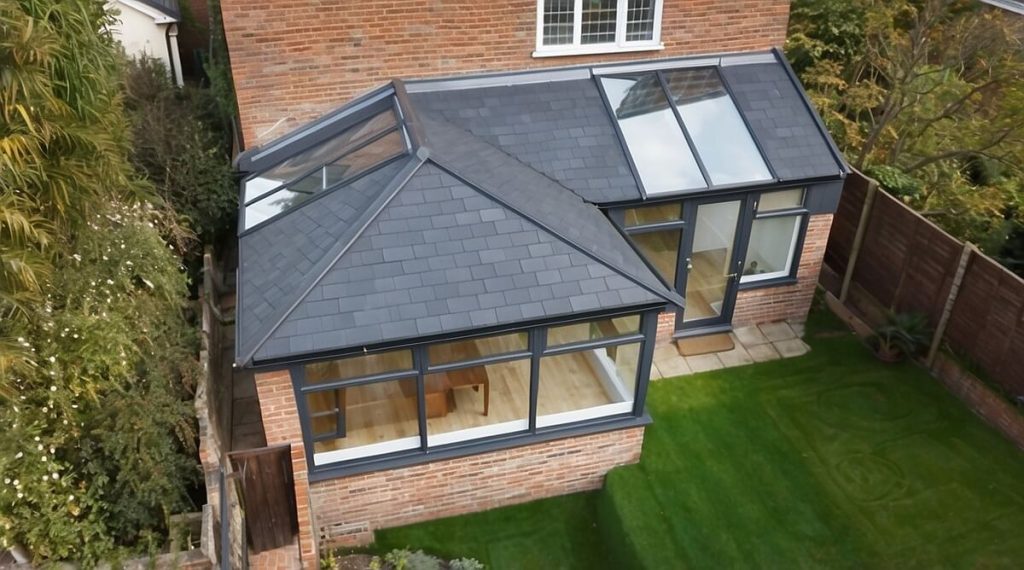
Glass-to-Floor Conservatory
This modern style replaces dwarf walls with full-height glazing, giving uninterrupted garden views. It suits contemporary homes and those seeking more daylight throughout the year.
Conservatory Glass Options
The type of glazing used in your conservatory plays a key role in energy efficiency, comfort, and usability throughout the year. At Renaissance Conservatories, we offer advanced glass options tailored to suit the orientation and purpose of your space.
- Climate control glass – Designed to reduce heat build-up and glare, this specialist glazing helps regulate internal temperatures, making it ideal for south-facing conservatories or homes prioritising thermal performance.
- High-performance double glazing – This offers excellent insulation, helping maintain a consistent temperature while reducing noise. It’s a reliable option for year-round comfort and energy savings.
Both glass types improve comfort levels while helping to lower energy costs. Depending on your conservatory’s location and how you plan to use the space, we’ll recommend the most suitable solution for long-term performance and visual clarity.
Conservatory Roof Options
Choosing the right conservatory roof is just as important as selecting the structure itself. The roof affects temperature control, light levels, and overall usability. At Renaissance Conservatories, we offer a range of options tailored to both new builds and replacements:
- Glass Conservatory Roofs – A popular choice for those wanting maximum natural light and a visually open feel. Our high-performance glazing improves energy efficiency and reduces glare, making it ideal for year-round use.
- Tiled Conservatory Roofs – These offer a solid, well-insulated solution that gives the feel of a full extension. Available in various finishes, they’re perfect for creating a warm and private interior space.
- Conservatory Roof Replacements – If your existing conservatory is underperforming, replacing the roof can make a significant difference. We’ll help you upgrade with minimal disruption and improved long-term value.
- Lantern Roofs – A stylish feature often used in orangeries or modern extensions. Lantern roofs create a striking architectural focal point while drawing in vertical light from above.
Each roof option is designed to meet different functional needs and aesthetic preferences. Our team can guide you through the best choice based on your conservatory type, orientation, and how you plan to use the space.
How Will You Use the Space?
Before choosing a type, think about how you plan to use the conservatory:
- Reading or relaxation space
- Dining area or kitchen extension
- Work-from-home office
- Year-round garden room
Matching the structure to your intended use will guide choices around style, glazing, heating, and ventilation.
For tailored advice, speak to our team. We handle everything from design to installation, providing full support throughout your conservatory project.
Types of Conservatory Overview
| Conservatory Type | Best For | Key Benefits | Points to Consider |
|---|---|---|---|
| Lean-to | Homes with low rooflines or limited space | Cost-effective, compact, suitable for modern layouts | Basic design with less architectural impact |
| Victorian | Period-style or traditional homes | Decorative features, bay-fronted shape, wide garden views | Requires sufficient roof height; not ideal for bungalows |
| Edwardian | Homes needing a practical, square layout | Maximises floor space, clean lines, versatile use | Hip-back roof required for lower rooflines |
| Gable-end | Properties with taller roof space | Increased ceiling height, strong architectural presence | May need hip-back adjustment on single-storey homes |
Ready to Plan Your Conservatory?
Whether you’re replacing an old structure or starting from scratch, our expert team will help you design a conservatory that works for your home and how you use it. No templates, no hard sell—just straightforward advice and support from start to finish.







